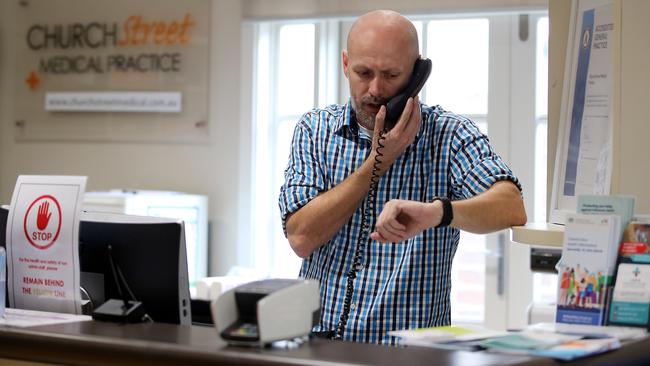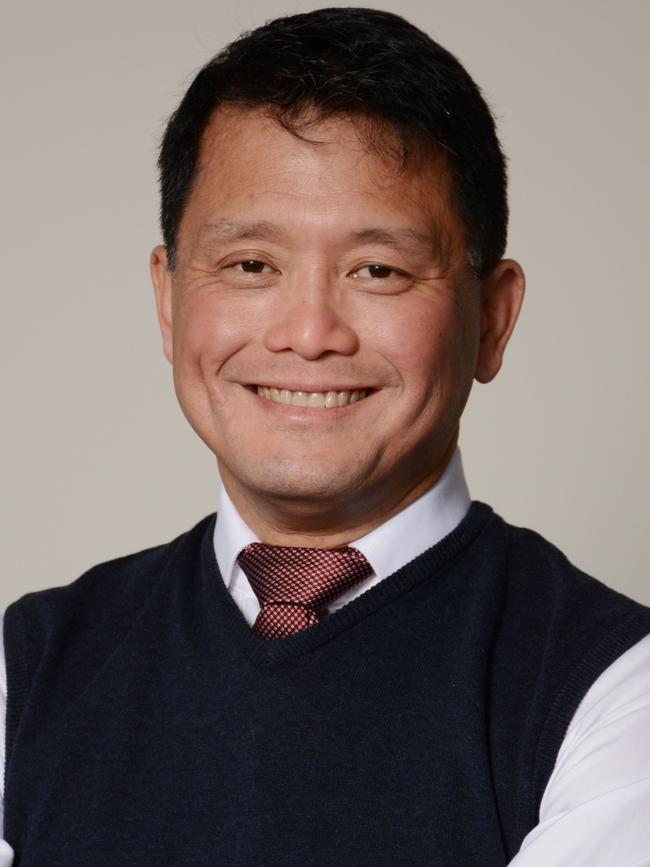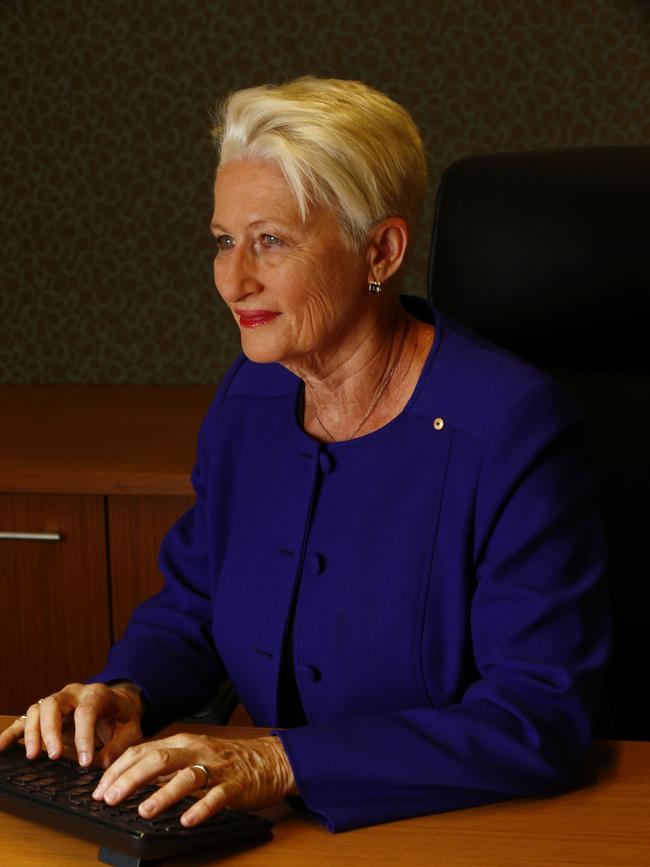Coronavirus: Reduce risks and Skype your doctor
Medicare supported telehealth video and audio consultations with doctors are with us.

Church Street Medical Practice in Sydney’s inner west is typical of surgeries adapting to life with coronavirus. Preventing virus infections in the waiting and consultation areas and dealing with suspected coronavirus cases is a big undertaking.
Practice manager Lachlan Stockbridge says door handles are disinfected every 15 to 20 minutes as is the payments terminal where patients punch in their card details. Patients in the waiting room are restricted to using every second chair.
“We have moved the entire practice to a cashless system, We’ve taken out all the magazines and the toys.”
Thankfully plans have moved quickly so that all patients can consult with their doctor by phone or video conferencing and be eligible for a Medicare rebate, which hadn’t generally been the case.
The Federal Government also plans to open up telehealth to other practitioners, such as mental health practitioners, specialists, consultant physicians, and psychiatric services related to COVID-19.
“The Government will continue to work on a further expansion of non-GP specialist telehealth under stage 5 in collaboration with the profession,” said Health Minister Greg Hunt on Sunday.
MORE FROM CHRIS GRIFFITH: How tech can help you when isolated at home | How did this house survive an inferno? | The new bike you can ride on water | Fake news infects health and politics | Watchful eye on the metadata watchers
Former Australian Medical Association president Kerryn Phelps says moves are afoot to introduce gap Medicare payments for Telehealth.
Proposals previously had involved only bulk billing, which meant private practitioners would either forego higher fees to bulk bill, or that patients received no Medicare support.
Telehealth will not only save patients from running the gauntlet, fearing they’ll run the risk of catching COVID-19 or another illness sitting in a doctor’s waiting room. It could prevent an entire practice from being forced to close should a staff member test positive to coronavirus.
University of NSW virologist Professor Peter White says doctors’ surgeries pose a definite risk to both patients and staff. “One is potentially mixing infected people with people who are going to the doctor for other ailments and illnesses. That’s a slightly different situation than just running around and going to the shops.”
He says if a doctor gets sick with coronavirus, the whole practice may have to quarantine for 14 days. “If it’s a large surgery of 12 doctors, they’re all going to have to self quarantine and the doctor’s surgery will have to shut.
“We know that many of the people visiting GPS tend to be older, so I would certainly encourage any type of Zoom teams, Skype teleconferencing and telephoning – if an old person is not savvy on the internet.”
Video consultations also let quarantined or self isolated doctors practice online if they are well enough to do so.
GP surgeries face other problems. Stockbridge warns that the supply of personal protective equipment used to shield staff and patients from the virus is “starting to dwindle”, and getting fresh supplies is not always easy.
Obtaining sufficient supplies of masks, protective clothing and COVID-19 test kits remains a huge challenge in this crisis. Health professionals are frightened of being required to help sick patients without adequate protection if the crisis festers here, as it has in New York.
Surgeries meanwhile will still have to treat the diabetes, cancers, heart conditions, allergies and mental health problems that come through their doors.
There’s the upcoming flu season and the complication of patients confusing COVID-19 with flu and turning up for treatment.
Health authorities want the public to have flu shots, but it may not be easy to encourage them into surgeries to get their jab.
Stockbridge’s answer is to isolate part of the surgery as a flu clinic and send patients there for shots.
The chair of the Australian Medical Association’s ethics and medico-legal committee Chris Moy has put his mind to this. Moy has been busy testing people for coronavirus in cars. He sees drive-through testing, as practised in South Korea, as reducing the danger of the virus getting into surgeries and being less risky to health workers doing the tests.

“You get them facing away from you. Even if they cough, they don’t cough at you. You’re wearing a mask and you quickly pop the thing in the nose and then their throat and send them off.”
He sees merit in drive-in flu jabs for those with cars, which effectively become an isolation bubble on wheels. “This is a brave new world, and everybody is trying to adjust in every sector of life at the moment. “We’re trying to get in a situation where we can find a way to maximise treatment and minimise risk.”
“The problem is having a big enough car park. Patients could be sent text messages and processed in batches.”
Of course many people don’t have cars and will get their flu jabs in surgeries but the aim is to minimise risk.
White says health practitioners could start using hotels or anything that’s empty at the moment. “To keep those people away from GP surgeries is not a bad idea.”
Closed schools too could be recast as health centres for jabs, as they were during the 1919 Spanish flu pandemics.
Moy says the AMA had been frustrated for ages by the requirement that most doctors have to physically see patients to get Medicare benefits. He says some patients might only need prescriptions or referrals or a general discussion about their concerns but these consultations didn’t attract a benefit.
He says government had worried that letting more of the public use video consultations could risk an abuse of Medicare. This logic is being thrown out the window with COVID-19. The concern now is the health risk of groups of doctors mingling with patients and the equipment resources (eg masks) consumed with this. There was the horror scenario of a patient sitting in a waiting room who was an undiagnosed COVID-19 sufferer.
Moy says to not expand rebates for telehealth consultations would be devastating. “This is a crisis, and one person getting through the net and affecting a practice takes out potentially a whole number of doctors and staff. We’ve got a much bigger problem (than rebate abuse).”
The government’s commitment to telehealth has become more solid over the past week following a series of announcements.
It announced a temporary Medicare benefits schedule and Department of Veterans’ Affairs items that would let doctors, nurses and mental health professionals deliver services via telehealth, provided services are bulk billed.
Moy says the original commitment didn’t go far enough. It was restricted to people who isolated themselves on medical advice, those who met the national triage criteria for suspected infection, registered medical or nursing practitioners or COVID-19 trained health clinic triage staff, among a list of carefully defined categories.
The government costed this package at about $100 million over 2019-20 and 2020-21.
Intense lobbying followed so that Medicare supported telephone and video consultations could open up basically to everyone.
It also means vulnerable and older GPs can switch to video consultations to protect themselves against the virus. It addresses a similar concern teachers have had about being at perpetual risk of coronavirus teaching children at school.
Church Street Medical Practice itself has implemented remote consultation. Stockbridge says patients can have phone consultations, and the practice offers video conferencing with Zoom software. “It’s much easier identifying someone who’s been sick if we can see they are actually sick,” he says.
“We're hoping that as things become more serious, people recognise that it’s probably in their best interest to avoid coming into the practice and do what they can to actually have a video consult rather than putting themselves or others at risk.”
Of course if you need to be examined or have a test, you need a face-to-face consultation.
The public’s interest in video consultations has surged since the virus outbreak. Brisbane-based Doctors on Demand has offered GP video consultations Australia wide since 2016, historically without a Medicare rebate. Consultations start at $60 during business hours and the business also issues prescriptions.
CEO Kirsty Garrett says demand has increased 300 per cent since February 20. She says the service has a core team of about 25 doctors on a 24-7 roster. Some are GPs working in day practices who see patients after hours on video. Other doctors work part time from home.
When asked whether patient demand has increased, she says: “That would be the understatement of the year.”
She says increased demand is twofold. “One is your general patient, acute and chronic patients who want to avoid going anywhere near a medical centre right now. We are getting a lot of people who feel they have symptoms that look like COVID-19 and they're looking for assurance, and also assessment to determine if they need to physically go to a bigger clinic, or need to have a test.”
She says Doctors on Demand has been reaching out for more GPs to address a shortage.
Phelps says there’s been big strides forward in the past few days. GPs can now prepare a mental health plan with patients without seeing them in person. The government has “expanded significantly” the mental health item numbers available in Medicare for teleconferencing.
She points to an increase in the incentive for bulk billing telehealth conferences from $6 to $13.
The limiting factor for these plans is “ being able to make this happen electronically apparently”.
“It's just been a matter of the technology catching up with a change in practice in pretty rapid time.”
She says she hopeful that by the end of the week, telemedicine by private practitioners who don’t bulk bill will attract a Medicare gap payment. Otherwise many GPs who charge above standard consultation rates will be out-of-pocket.
But there were still technical challenges. Some doctors and patients wouldn’t know how to use Skype, or Zoom, or other video calls apps. “It’s a matter of both ends of the consultation having the technology available and the connectivity as well.” Some remote consultations may have to be by phone.
She says doctors also will need access to patient records remotely but they may not be set-up at home for this. In some cases, a practice’s IT consultants would need to install remote access packages such as LogMein, TeamViewer or Amazon Workspaces.
“We’re in a position now where we can offer a lot of chronic disease management and medical advice and mental health care advice over the phone. There are obviously going to be things that we cannot do on the phone”.
Phelps says some doctors might conduct telehealth consultations from a room in their clinic without seeing the patients there.

One part of the telehealth jigsaw puzzle is yet to be in place. If doctors consult remotely, they need to be able to issue scripts remotely.
Many surgeries have arrangements in place to email prescriptions to pharmacies and there are two large players providing digital prescription services. However paper scripts are eventually needed.
The federal government had been working towards a better cloud-based digital prescription system before coronavirus but it is yet to be implemented.
Phelps says the pandemic is a good reason for accelerating its implementation.
The Royal Australian College of General Practitioners also wants a better system. It has called on the government to amend current law so that use of the electronic transfer of prescriptions through a prescription exchange service meets legal requirements, letting pharmacies dispense medicines without seeing a physical paper prescription.
It says this would be an interim solution and seems a sensible move to go with digital consultations.
Moy says the medical system is in uncharted waters, but new solutions are necessary. “I think all of us, including doctors and practices, need to find a way to provide care which still needs to happen.
“We’ve got to find a way. The health system is a critical part of the community that has to keep working.”

To join the conversation, please log in. Don't have an account? Register
Join the conversation, you are commenting as Logout